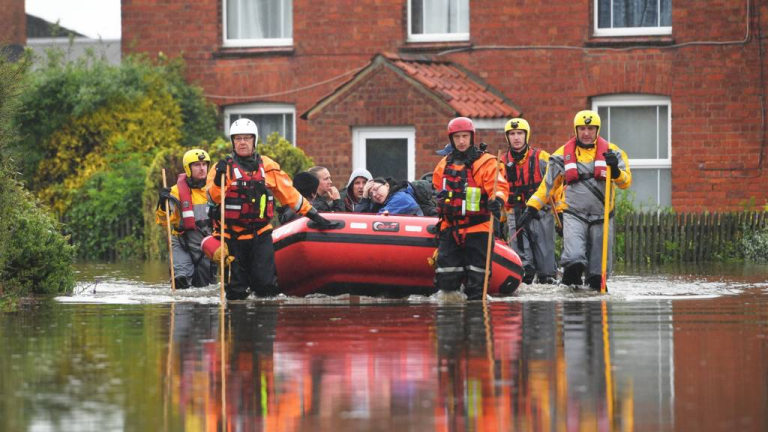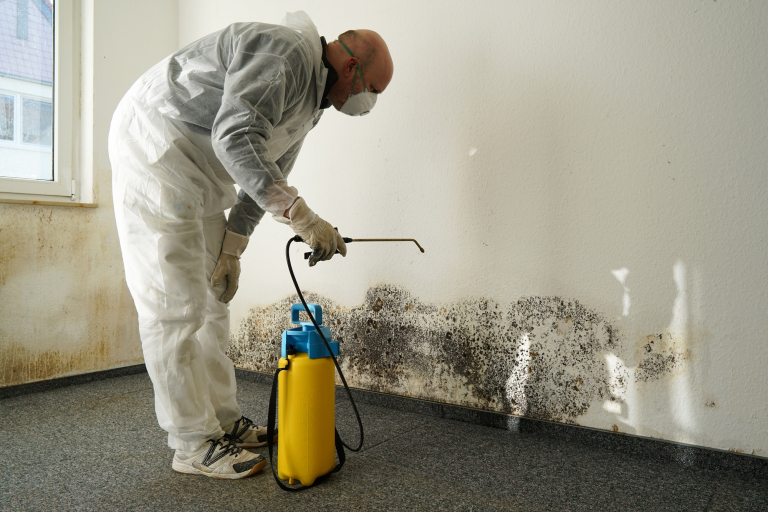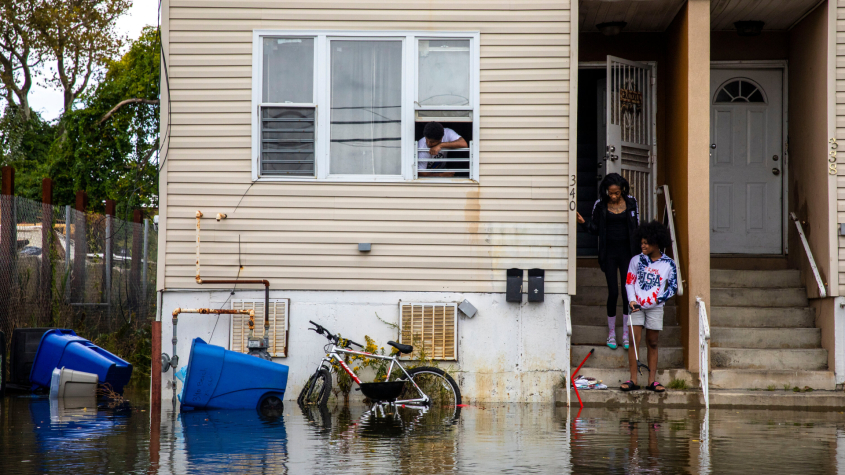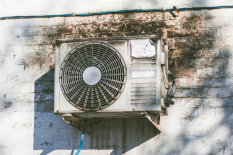When faced with the aftermath of a flood, it’s crucial to understand the impact it can have on your property and take prompt action to minimize further damage. By being informed and acting swiftly, you can navigate the restoration process more effectively.
Dealing with a Flood
Understanding the Impact of a Flood
A flood can cause extensive damage to your home, affecting both its structure and contents. The presence of excess water can lead to various issues such as:
- Structural damage: Floodwaters can weaken the foundation, walls, and floors of your property. This can compromise the stability and safety of the entire structure, requiring immediate attention.
- Electrical hazards: Water and electricity are a dangerous combination. Flooding can damage electrical systems, increasing the risk of electrical shocks or fires. It’s crucial to exercise extreme caution when dealing with electrical components after a flood.
- Mold growth: Excessive moisture and damp conditions left behind by a flood create an ideal environment for mold growth. Mold not only damages your property further but can also pose health risks to you and your family.
Importance of Prompt Action
Taking prompt action is essential when dealing with a flood-damaged property. Here are a few reasons why immediate response is crucial:
- Minimize further damage: Acting quickly can help prevent further damage to your property. The longer water remains stagnant, the more it can seep into building materials and cause irreparable harm.
- Mitigate health risks: Standing water and excess moisture create a breeding ground for bacteria, mold, and other contaminants. By addressing the flood damage promptly, you can reduce the risk of health issues associated with exposure to these hazards.
- Preserve personal belongings: Salvaging and restoring your personal belongings can be more successful if you act swiftly. Water damage can quickly ruin items such as furniture, carpets, and electronics. By taking prompt action, you increase the chances of saving and restoring these possessions.
To ensure your safety and the effective restoration of your property, it’s advisable to consult professional restoration services. They have the expertise, equipment, and experience to handle flood damage effectively. In the next section, we will explore the importance of hiring reliable restoration professionals and obtaining cost estimates to guide you through the restoration process.
By understanding the impact of a flood and promptly taking the necessary steps, you can begin the process of restoring your property and getting your life back on track. Remember, safety should always be the top priority when dealing with flood damage.
Safety First

When dealing with the aftermath of a devastating flood, prioritizing safety is of utmost importance. Before beginning any restoration efforts, it is essential to assess the safety of the property and take necessary precautions.
Assessing the Safety of the Property
Before entering the property, it is crucial to evaluate its structural integrity. Look for any visible signs of damage, such as cracks in the walls, sagging ceilings, or compromised foundations. If you notice any significant structural issues, it’s important to contact a professional before proceeding further.
Additionally, be cautious of potential electrical hazards. If the floodwaters have come into contact with electrical outlets, appliances, or wiring, there is a risk of electric shock. It is advisable to turn off the electricity at the main breaker or fuse box before entering the property. If you are unsure about the safety of the electrical system, consult a qualified electrician. Remember, water and electricity do not mix.
Taking Precautions before Restoration
When beginning the restoration process, it is essential to take certain precautions to safeguard your well-being:
- Personal Protective Equipment (PPE): Wear appropriate PPE, such as rubber gloves, goggles, and a mask, to protect yourself from potential contaminants and harmful substances.
- Ventilation: Open windows and doors to improve air circulation and prevent the buildup of mold and mildew.
- Proper Hygiene: Wash your hands thoroughly with soap and clean water after handling any flood-damaged materials or coming into contact with floodwaters.
- Avoiding Direct Contact: Minimize direct contact with flood-damaged materials, especially if they have been contaminated by sewage or other hazardous substances.
- Proper Waste Disposal: Dispose of any flood-damaged materials, such as carpets, furniture, or drywall, following the guidelines set by your local waste management authorities.
By assessing the safety of the property and taking necessary precautions, you can ensure the well-being of yourself and others involved in the restoration process. Remember, if you are uncertain about any aspect of the restoration or come across potential hazards, it is always wise to seek professional assistance to avoid further risks.
In the next section, we will discuss the process of assessing the damage caused by the flood, including evaluating water damage and identifying structural and electrical issues.
Assessing the Damage
After a devastating flood, it is crucial to assess the damage to your property before initiating the restoration process. This assessment helps in understanding the extent of the damage and determining the necessary steps for effective restoration. Two key aspects to consider during the assessment are evaluating water damage and identifying any structural and electrical issues.
Evaluating Water Damage
Water damage can have far-reaching consequences and can affect various areas of your property. It is essential to assess the extent of water damage to determine the scope of the restoration process. Here are some areas to inspect for water damage:
- Walls and Ceilings: Look for signs of water stains, discoloration, or peeling paint on walls and ceilings. Soft or sagging drywall is also an indication of water damage.
- Flooring: Examine floors for warping, buckling, or swelling. Carpets may feel damp, and wooden floors may show signs of cupping or separation.
- Electrical Systems: Be cautious when assessing electrical systems. Water can damage electrical wiring and pose a safety hazard. If you suspect electrical damage, it is crucial to consult a professional electrician.
- Plumbing: Check for any leaks, burst pipes, or damaged plumbing fixtures. Water damage to plumbing systems can lead to further complications if not addressed promptly.
- Basement: Pay close attention to the basement, as it is particularly vulnerable to water damage. Look for signs of water pooling, dampness, or mold growth.
By thoroughly evaluating the water damage, you can prioritize the restoration efforts and address any potential issues promptly. If you need guidance on assessing the damage or dealing with specific issues like air conditioning problems, refer to our related articles on common air conditioning problems and AC maintenance tips during summer.
Identifying Structural and Electrical Issues
In addition to water damage, it is vital to identify any structural and electrical issues caused by the flood. Structural damage can compromise the integrity of your property, while electrical issues pose a significant safety risk. Here are some steps to identify structural and electrical issues:
- Structural Inspection: Look for signs of cracks, shifts, or weakened foundations in walls, floors, and ceilings. Pay attention to door and window frames, as well as any visible signs of structural damage.
- Roof Assessment: Inspect the roof for missing or damaged shingles, leaks, or signs of water penetration. Damaged roofs can lead to further water damage and should be addressed promptly.
- Electrical System Evaluation: If you suspect electrical damage, it is crucial to turn off the power supply to your property and consult a licensed electrician. They can assess the electrical system for any water damage, faulty wiring, or potential hazards.
By identifying and addressing structural and electrical issues, you can ensure the safety of your property and prevent further damage. Remember, if you encounter any major structural issues or electrical problems, it is advisable to consult professionals who specialize in flood damage restoration.
In the next section, we will explore the essential steps involved in the restoration process, including water extraction, removing damaged materials, and mold remediation.
Steps for Restoration

Restoring your property after a devastating flood requires a systematic approach to ensure effective and thorough restoration. Here are the key steps involved in the restoration process: water extraction and drying, removing damaged materials, and mold remediation.
Water Extraction and Drying
The first step in the restoration process is to extract the water from your property and initiate the drying process. This is crucial to prevent further damage and inhibit the growth of mold and mildew. Professional restoration services utilize specialized equipment, such as pumps, wet vacuums, and industrial-grade dehumidifiers, to effectively remove water and moisture from the affected areas.
The restoration team will assess the extent of water damage and strategically place the equipment to optimize drying. They will monitor the moisture levels regularly to ensure thorough drying. It’s important to note that proper drying may take several days, depending on the severity of the flooding and the affected materials.
Removing Damaged Materials
Once the water extraction and drying process is underway, the restoration team will proceed with removing damaged materials from your property. This includes items that are beyond repair, such as soaked carpets, flooring, drywall, insulation, and furniture. Removing these damaged materials is crucial to prevent further deterioration and the potential growth of mold.
During this step, the restoration professionals will exercise caution to minimize the spread of contaminants and mold spores. They will follow appropriate safety protocols and use personal protective equipment (PPE) to protect themselves and maintain a safe environment.
Mold Remediation
Mold can quickly develop in damp environments, making mold remediation an essential part of the restoration process. Even if visible mold growth is not present, the restoration team will conduct thorough inspections using specialized equipment to detect any hidden mold growth.
If mold is detected, the professionals will take the necessary steps to remove and remediate the mold. This may involve using antimicrobial treatments, physically removing affected materials, and improving ventilation in the affected areas. Mold remediation is a critical step to ensure the health and safety of your property and its occupants.
By following these steps for restoration, you can effectively address the damage caused by the flood and restore your property to its pre-flood condition. Hiring reliable restoration services is essential to ensure that the restoration process is carried out efficiently and professionally. For tips on finding reputable restoration services and obtaining cost estimates, refer to our article on finding reliable restoration services.
To prevent future flood damage, it’s important to consider preventative measures such as improving drainage systems and protecting your property with flood insurance. These measures can help minimize the risk of future flood-related damage. For more information on preventative measures, refer to our article on improving drainage systems and protecting your property with flood insurance.
Hiring Professionals
When it comes to restoring your property after a devastating flood, hiring professionals is often the best course of action. They have the expertise, experience, and specialized equipment to efficiently and effectively handle the restoration process. In this section, we will discuss two important aspects of hiring professionals: finding reliable restoration services and obtaining cost estimates.
Finding Reliable Restoration Services
Finding a reliable restoration service is crucial to ensure that the restoration process is carried out properly. Here are a few steps to help you find reputable professionals:
- Research: Start by conducting thorough research. Look for restoration companies in your area that specialize in flood damage restoration. Check their websites, read customer reviews, and compare their services and credentials.
- Certifications and Licensing: Verify that the restoration service you choose has the necessary certifications and licenses. Look for certifications from reputable organizations such as the Institute of Inspection, Cleaning and Restoration Certification (IICRC) or the Restoration Industry Association (RIA). These certifications indicate that the professionals have undergone proper training and adhere to industry standards.
- Insurance Coverage: Ensure that the restoration service has proper insurance coverage. This protects both you and the professionals in case of any accidents or damages that may occur during the restoration process.
- References and Recommendations: Ask for references from the restoration service and reach out to previous clients to inquire about their experience. Additionally, seek recommendations from friends, family, or neighbors who may have dealt with similar situations in the past.
Remember, it’s important to act promptly and not rush into hiring the first restoration service you come across. Take the time to find professionals who are reliable, experienced, and capable of handling the specific needs of your property.
Obtaining Cost Estimates
Before hiring a restoration service, it’s essential to obtain cost estimates to understand the financial implications of the restoration process. Here’s what you should consider:
- On-Site Inspection: Most restoration services offer free on-site inspections to assess the extent of the damage and determine the scope of the restoration project. During the inspection, the professionals will evaluate the damage and provide recommendations for the necessary repairs and restoration.
- Detailed Estimates: Request detailed written estimates from multiple restoration services. The estimates should outline the specific services to be provided, the materials required, and the associated costs. This allows you to compare the estimates and make an informed decision.
- Additional Costs: Keep in mind that the initial cost estimate may not include all possible expenses. There might be additional costs for specialized equipment, mold remediation, or structural repairs. Discuss these potential costs with the professionals during the estimation process to avoid any surprises later on.
By obtaining multiple cost estimates, you can ensure that you are getting a fair price for the restoration services. However, it’s important to prioritize quality and reliability over cost alone. Remember to consider the reputation, expertise, and customer reviews of the restoration service when making your final decision.
Hiring professionals for the restoration process can alleviate the stress and ensure that your property is restored to its pre-flood condition. Take the time to find reliable restoration services and obtain accurate cost estimates to make the best choice for your property and your peace of mind.
Preventative Measures for the Future

After experiencing the devastating effects of a flood, it’s essential to take preventative measures to protect your property from future incidents. By implementing proactive strategies, you can minimize the risk of flood damage and safeguard your home. Here are two key preventative measures to consider: improving drainage systems and protecting your property with flood insurance.
Improving Drainage Systems
One effective way to prevent flood damage is by improving the drainage systems around your property. Proper drainage ensures that water flows away from your home and doesn’t accumulate near the foundation. Here are some steps to improve your drainage systems:
- Gutters and Downspouts: Clean your gutters regularly to remove debris and ensure unobstructed water flow. Install downspout extensions to direct water at least 6 feet away from your home’s foundation.
- Grading: Check the grading around your property to ensure that the land slopes away from your home. This helps water to naturally drain away from your foundation.
- French Drains: Consider installing a French drain system if you have persistent drainage issues. A French drain consists of a perforated pipe surrounded by gravel, which collects and redirects water away from your property.
- Sump Pump: Install a sump pump in your basement or crawl space to remove excess water and prevent flooding during heavy rainfall. Make sure the sump pump is regularly maintained and has a backup power source.
By improving your drainage systems, you can significantly reduce the risk of flood damage to your property.
Protecting Your Property with Flood Insurance
Another crucial measure to consider is obtaining flood insurance. While standard homeowner’s insurance policies typically cover damages from water leaks or burst pipes, they often exclude coverage for flood-related damages. Flood insurance provides financial protection specifically for losses caused by flooding.
To obtain flood insurance, you can contact the National Flood Insurance Program (NFIP) or speak with a licensed insurance agent who specializes in flood insurance. They can guide you through the process of assessing your flood risk and finding the right coverage for your property. It’s important to note that flood insurance typically has a waiting period before it becomes effective, so it’s wise to secure coverage well in advance.
Having flood insurance not only provides peace of mind but also ensures that you have the financial resources to repair and restore your property in the event of a flood.
Taking proactive measures, such as improving drainage systems and obtaining flood insurance, can greatly reduce the impact of future floods on your property. By being prepared and proactive, you can protect your home and minimize the potential damage caused by flooding.
















